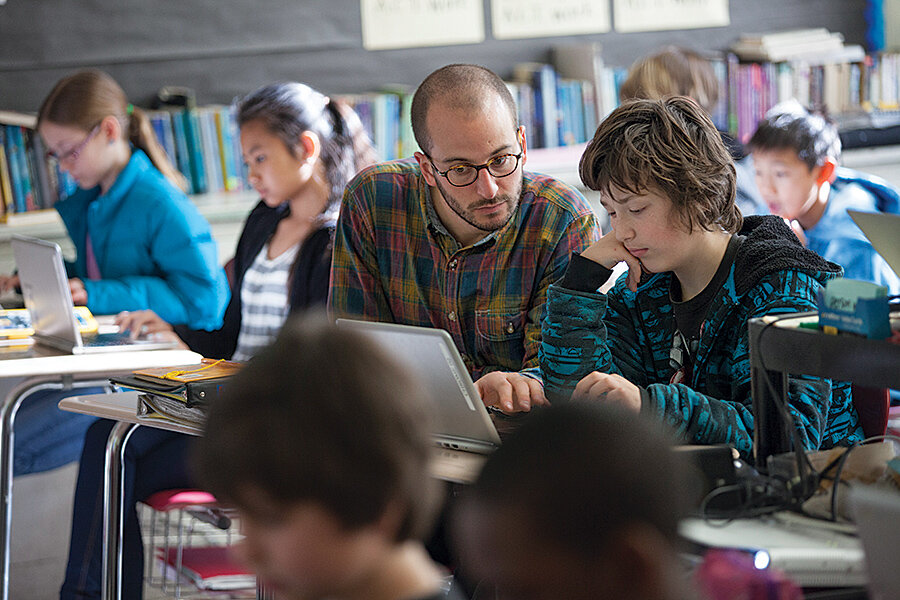Teaching that's tailored to learners
Loading...
Sometimes a new idea seems so obvious that we slap our foreheads and wonder what we were thinking all along. In the early 19th century, the German educator Friedrich Froebel came up with the idea that young children should be encouraged in what they naturally want to do: play. Teachers could help them along through games and other forms of loosely structured education, bearing in mind that each child learns at a different pace. The charming word he gave to his concept is now used worldwide: kindergarten.
Kindergarten was an early example of “flipping the classroom.” Before Froebel, children were ignored, lectured to, or, worse, treated as the newest entrants in the labor pool. Froebel made early education into a garden of care and encouragement. But for all the success that the kindergarten movement has enjoyed in the past century and a half, its spirit has mostly stopped at first grade, leaving elementary and secondary education stuck in the old paradigm of a teacher standing in front of 20 or 30 students teaching the same subject in the same way to everyone.
Not that teachers, students, parents, and administrators wanted it that way. All sorts of new techniques were tried over the years. Technology – from film strips to computers, educational TV to the Internet – was embraced, though mostly as an add-on. The post-K pattern endured. Teachers held forth, students took notes, and everybody worked on the same reading assignment and math problem at the same pace, even if some children were left behind.
That is changing now thanks to “blended learning." What blended learning is not about (and this is refreshing) is new hardware. Flooding a school with iPads isn’t the point. As the Monitor’s Amanda Paulson explains in a cover story examining the trend, blended learning is the practical use of an ever-improving online curriculum combined with a rethinking of the classroom itself.
Children are encouraged to log on, listen, and learn and at their own speed. Some blast ahead; others work with concepts they find difficult until the light goes on. And teachers are freed from lecturing and can act as tutors, mentors, and coaches. That yields more cultivation and care of individual students.
OK. There’s another factor at work in blended learning. School budgets are tight and will only get tighter. Digital delivery of lectures, exercises, and tests saves personnel costs. But whatever the drivers, the results, as you’ll read, are promising, and adoption of this smarter, more integrated form of K-12 teaching is spreading fast.
Is this just the latest educational fad? There have been dozens over the decades, from new math to open classrooms to whole-language education. Fads are urgent and promise quick results. Knock down walls! Throw out the phonics books! Master “set theory” and Base 8 to help win the space race! Blended learning doesn’t seem like that. It is evolutionary and organic, more technique than goal. As one educator told Amanda, “We didn’t set out to be blended. We said, ‘Let’s rede-fine what it means to be college-ready,’ and then we backwards-planned a school.”
Perhaps the most important benefit to blended learning is that it flips the classroom, tailoring education to the different needs and speeds of students. Teachers become gardeners rather than foremen. Friedrich Froebel would have liked that.
John Yemma is the Monitor's editor at large. He can be reached at yemma@csmonitor.com.






